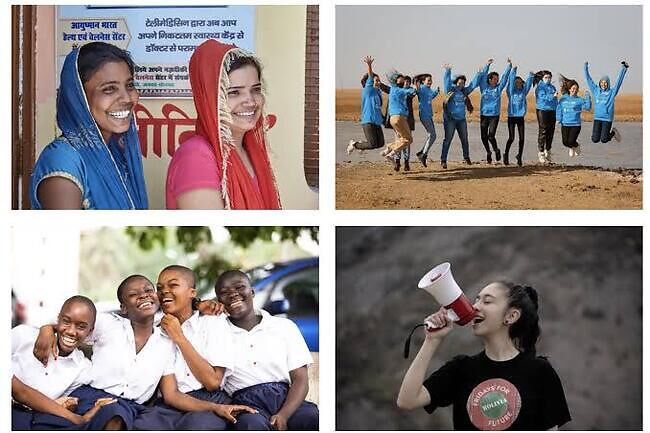According to un.org, the programme exists to address the challenges girls face and to aid the promotion of their empowerment, not leaving out the fulfilment of their human rights.
While this is true, there have been some limitations imposed on the investment on the rights of the girl child, and they have lots of challenges to face on the way to fulfilling their potentials. Not to mention that consistent crises of climate change, COVID-19, and humanitarian conflicts are making this worse for the girl child.
All over the world, their right to education, mental health, physical wellness, and the protections needed for a life free from violence, are being threatened. The girl child, just like the boy child, has a right to safe life, educated life and above all, deserves to live a healthy life.
What’s changing?
Girls are breaking the bias. They are breaking boundaries and changing the narrative. The girl child is creating a world that is relevant for her and also generations to come. The girl child is coming to the realisation of how much strength she carries; how resilient she is; how powerful she is; how influential she can be; and what a change maker she can be in her generation and beyond.
According to un.org, “Today, more than 1.1 billion girls are poised to take on the future. Every day, girls are breaking boundaries and barriers, tackling issues like child marriage, education inequality, violence, climate justice, and inequitable access to healthcare. Girls are proving they are unstoppable.”
Ways to be a part of this move
According to un.org and unicef.org, there are various ways by which you can be a part of this move. The move that aims to give the girl child a better and quality-filled life. These steps are not only limited to the celebration of the international day of the girl child. Today, and beyond, we take part in the move.
1. Raise awareness
In your country, raise awareness of the importance of a girl child and seek to tackle the factors that are posing as a challenge. It’s your country, so you’ll get a hang of these factors better than someone who is not a citizen and knows next to nothing about the dynamics of your country.
2. Work hand-in-hand with influencers; especially women
Do not limit this to women within your sphere of influence alone, extend this to women across all industries. What will these women do? They will model the change that you, we, seek in the life of the girl child. This will give them hope and serve as a motivation and reminder that their dreams are valid.
3. Social media
Put your social media to good use by creating awareness of the need for a life of quality for the girl child. Engage people across all platforms. Create content that will orientate the people and motivate them to stand up for the girl child; putting an end to the stigmatisation and deprivation that is commonly attached to them because they are girls.
4. Support female leadership
Instead of looking down on females in leadership, support them and treat them like the humans that they are. Allow them prove themselves, allow them put their potentials to good use.
5. Access
Improving access to and uptake of inclusive adolescent girl-centered services at all times but especially in crisis response and recovery
6. Resources
Increasing resources for and investments in adolescent girls, including for the networks and organizations that support quality and inclusive education and prioritise their well-being.
SDGs and achieving gender equality
The un.org mentioned that the 2030 Agenda for Sustainable Development has 17 Sustainable Development Goals (SDGs) adopted by world leaders in 2015. These goals embody a roadmap for progress that is sustainable and carries everyone along.
Further more, the united nations also says that achieving gender equality and women’s empowerment is essential to each of the goals. And, we will get justice and inclusion, economies that work for all, and sustaining our shared environment now and for generations yet to be born.
Women and girls empowerment and promotion of gender equality is crucial to bringing up to speed sustainable development. Bringing to an end all forms of discrimination against women and girls is not only a basic human right but it also has a multiplier effect across all other development areas.
In conclusion, remember that the girl child has her strengths, she is resilient and can be influential. On the international day of the girl child today, ‘Our time is now – our rights, our future.’






